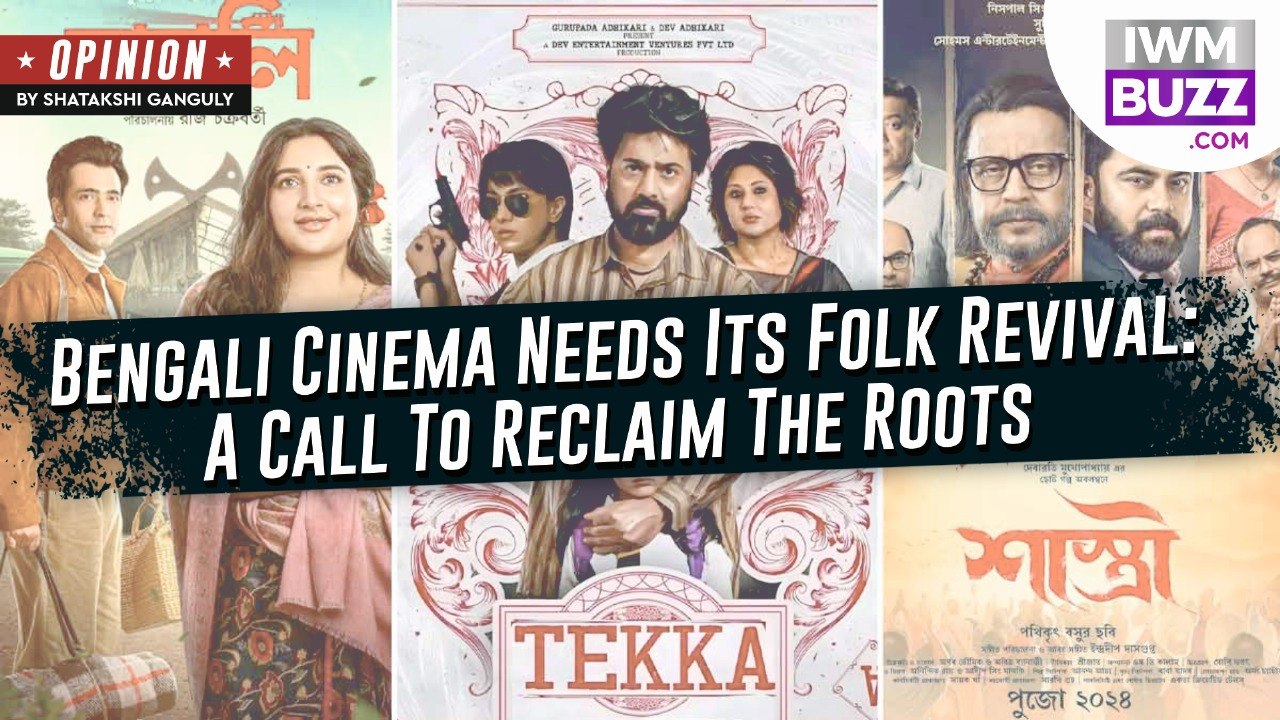How do most Bengali films feel nowadays? A Bengali filmmaker sits in a dimly lit South Kolkata café, scribbling furiously in a notebook, struggling to craft yet another urban existential drama where the protagonist sighs about life between sips of overpriced coffee. Meanwhile, in Karnataka, a film rooted in an ancient folk tradition—one that doesn’t pander to glossy, Bollywood-style storytelling—shakes the box office and captures the national imagination.
The contrast is glaring. And the lesson? Bengal needs to stop over-intellectualizing its cinema and start reclaiming its folk roots before it loses them entirely.
Remembering Chau: An Untapped Cinematic Goldmine
Let’s talk about Bengal’s own rich heritage of folk performance, particularly Chau dance. This stylized masked dance from Purulia, Jharkhand, and Odisha is a heady mix of martial arts, myth, and movement, dripping with raw energy. It is as cinematic as it gets—vivid masks, powerful narratives, and physical dexterity that could put many action sequences to shame. But, curiously, where are its cinematic adaptations? Where is the Bengali answer to “Kantara,” which drew from the Bhuta Kola tradition and turned into a cultural sensation?
“Kantara” proved that hyper-local stories—when treated with authenticity and reverence—can transcend boundaries. With a meagre budget, the film became a nationwide sensation, proving that rootedness is not just an artistic choice but a commercial strategy. Meanwhile, Bengali cinema continues to flirt with Bollywood-esque stylization, diluting its essence instead of embracing its distinctiveness.
A Tale Of Two Cinemas: South vs. Bengali
There is a fundamental difference in how South Indian industries and Bengali cinema approach their cultural ethos. The South has mastered the art of making rooted, low-budget films that strike a universal chord. Think “Kantara,” “Karnan,” “Jai Bhim”—all deeply entrenched in their local socio-political realities yet fiercely cinematic. They don’t yearn to be Bollywood; they are proud of their identities and let the stories do the talking.
On the contrary, Bengali cinema, with few “exceptions”, seems perpetually caught in an identity crisis. One half wants to be the next Satyajit Ray without the depth, and the other half wants to be Bollywood without the budget. The result? A smattering of films that neither celebrate their origins nor carve out something distinct.
Let’s be clear—Bengal does not lack stories. It lacks the conviction to tell them in an unapologetically regional voice. There are reservoirs waiting to be tapped. Not that they haven’t “tried” at all, but only if with more integrity!
We get rehashed narratives where protagonists sip coffee in South Kolkata cafes, lament about existential crises, or try too hard to replicate Bollywood-style gangster dramas. Now this happens both ways, we as audience too remain extremely ‘backward’ and are not likely to stay ‘grounded’ to our roots.
Moving Beyond Performative Artistry
There is another concern: Bengali actors seem more interested in “playing” characters than in embodying them. Acting has become too self-aware, too performative, often lacking organic immersion. In contrast, watch Rishab Shetty in “Kantara”—a filmmaker and actor who became one with the folklore he depicted. It wasn’t about him; it was about the story. The physicality, the intensity, the authenticity—it all translated into something visceral. Bengali cinema often forgets that authenticity cannot be manufactured; it has to be lived.
Somewhere along the line, there also appears to be a sense of entitlement. The industry expects audiences to flock to the theatres simply because it is Bengali cinema. Sorry to break it, but cultural legacy alone doesn’t sell tickets. Content does.
The Bollywoodification Syndrome
There is an unhealthy obsession with Bollywood within Bengali cinema, despite the fact that Bollywood itself is undergoing an identity crisis. The moment a Bengali film gets a slightly higher budget, it suddenly adopts larger-than-life tropes—over-the-top action sequences, forced romantic subplots, or a superficial urban sheen. But why should a Bengali film try to be Bollywood? Why not be more like “Jallikattu” or “Kumbalangi Nights”—films that stayed rooted and yet reached international audiences?
Instead of trying to imitate Bollywood’s grandeur, Bengali cinema should focus on storytelling, texture, and authenticity. It is to be—raw, rustic, bleeding with folk influences.
Revival is Not Just an Option, It is a Necessity
So what needs to be done?
Reclaim the folk traditions – Bengal has an unmatched repository of folk music, dance, and storytelling. Chau, Baul songs, Gambhira performances—why are these not being adapted into mainstream cinema?
Ditch the obsession with Bollywood tropes – South Indian cinema is winning because it plays by its own rules. Bengali films should embrace their own narrative structures instead of forcing commercialized formulas.
Authenticity over performance – Bengali actors must stop “playing” characters and start living them. The audience can smell pretence from a mile away.
Tell stories that matter – The soil of Bengal is rich with untold stories. Instead of making one more urban drama with pseudo-intellectual dialogues, why not a film on the Naxalite movement told from a folk perspective? Why not a horror film inspired by Bengal’s extensive folklore?
A Final Word: Pride In Identity
The South’s rise isn’t just about films; it is about cultural self-respect. Bengal has always been a land of cultural rebellion, but somewhere, its cinema has lost that fire. Perhaps it is time to bring it back—by looking inward, by being fearless, by embracing what makes it uniquely Bengali. And who knows? The next “Kantara” might just be hidden in the masked dancers of Purulia, waiting to be rediscovered.
The question is—will Bengali cinema dare to reclaim its roots? Or will it continue pretending to be something it is not? The answer, dear reader, lies not in the coffeehouses of South Kolkata but in the red soil of Bengal’s heartland, where the real stories wait to be told.
Time to wake up before the folk spirit of Bengal turns into nothing more than a forgotten footnote.

